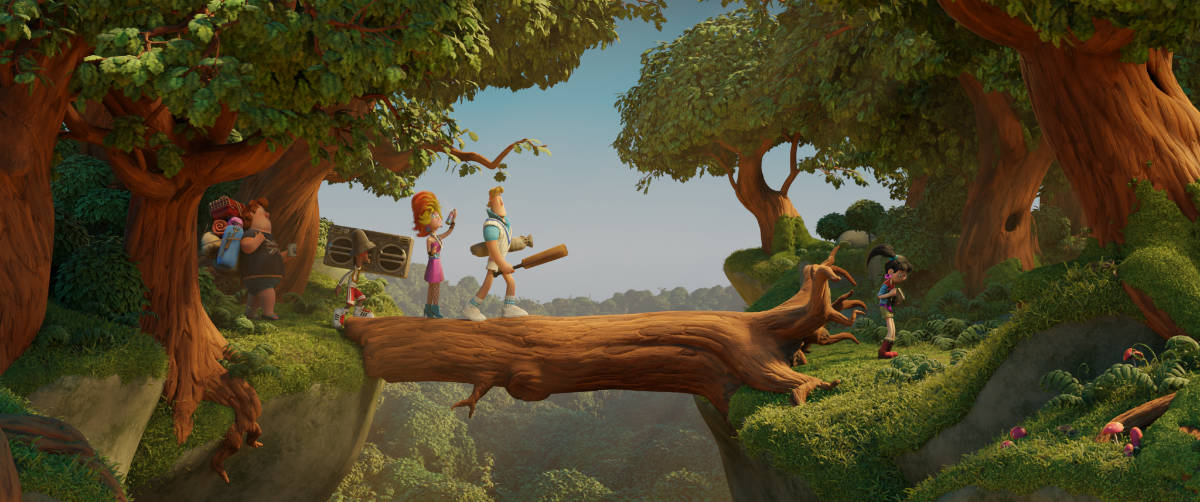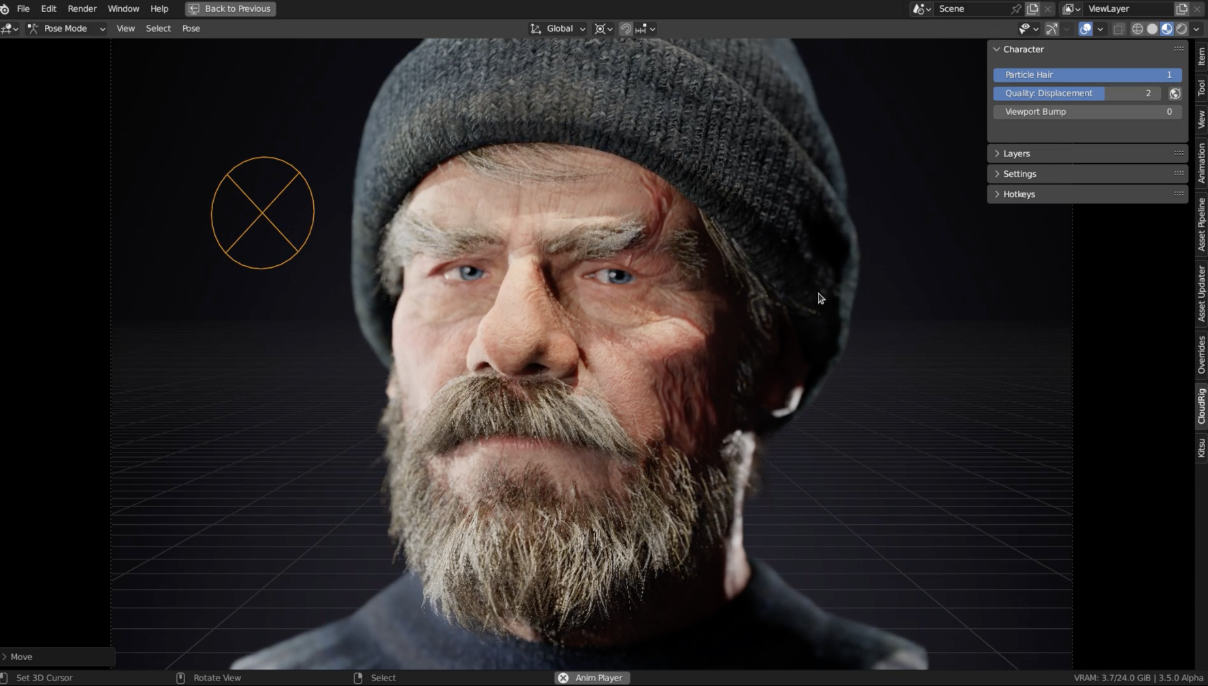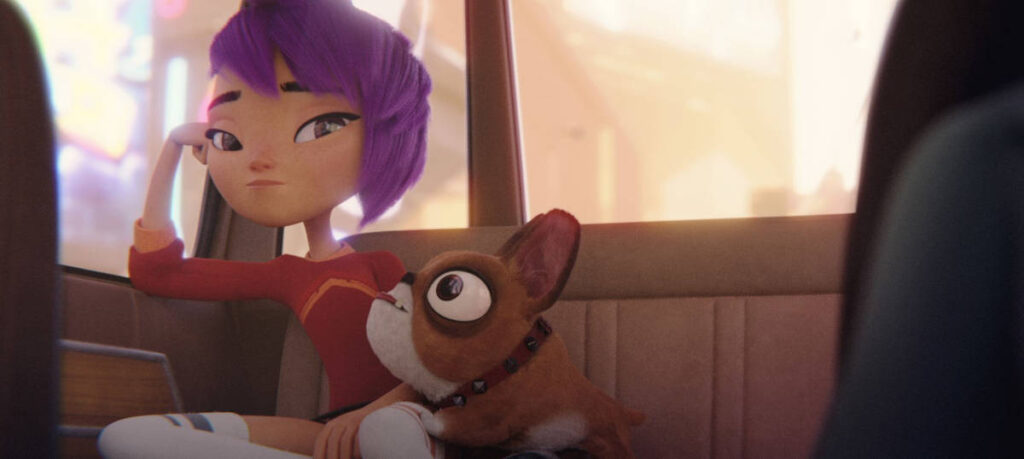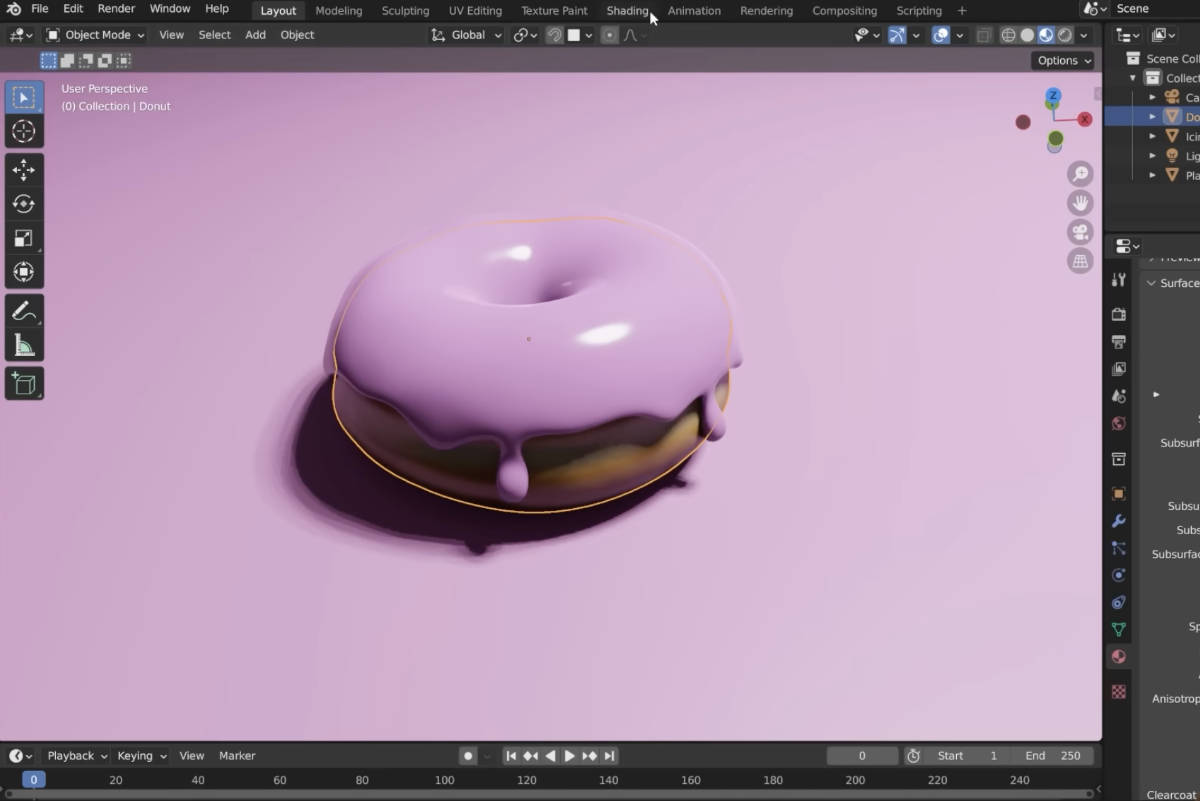Blender. If you know even a little about 3D animation, you’ve heard of it.
It’s a much loved 3D animation and modeling tool, becoming more and more popular in the entertainment industry. From non-linear editing to intricate composition, you have the ability to become an expert animator, sculptor and lighting specialist with a single software tool that offers limitless potential.
In this review, we will look at the exciting features of Blender and highlight some of the pros and cons of the tool.
Table of Contents
What is Blender?
Blender 3D is an open source, free-of-charge, animation software that enables you to make your own movies or animations. It has become a go-to for professionals in tv and film studios, game designers, as well as budding hobbyists and students.
Supporting all aspects of the 3D pipeline: modeling, animation, simulations, rendering, motion tracking, compositing, rigging, rendering, compositing, composing, rigging, and video editing. There are even some powerful 2D animation tools with its “grease pencil” feature.
Blender is a community-driven project and gives people the privilege to modify its codebase – from minor tweaks to major changes. Consequently leading to new features, improved bug fixes and better usability. Everyone can donate and participate in this revolutionary 3D tool.
Blender’s mission is to get the world’s best 3D CG technology in the hands of artists as free/open source software.
It will run seamlessly on any operating system, whether it be Windows, Mac or Linux.

History of Blender
On January 2nd, 1994, the revolutionary software development of Blender was brought to life by Ton Roosendaal.
January 1995 saw the release of Blender 1.0, Roosendaal invested his savings to see this 3D creation tool released to the world.
In June 1998, Not a Number (NaN) opened its doors and distributed Blender under an enticing freemium pricing scheme. The company received two rounds of funding. However, due to the harsh economic climate at that time combined with other issues it had to shut down early 2002.
In 2002, Roosendaal established the Blender Foundation as a non-profit organization with the goal of making Blender open source. His ambition was to honor all those who had worked on this project by creating a public monument and providing them with an opportunity to use it for their portfolios. In July that year, he launched a crowdfunding campaign: Free Blender!
The Blender Foundation was able to raise one hundred and ten thousand euros in only seven weeks, all thanks to its massive community of 250,000 users! This amount enabled the foundation to buy back Blender from its investors.
On October 13th, 2002, Blender was released under a open-source contract – GNU General Public Licence.
The Blender Foundation formed the Blender Institute which included an official office and studio to promote its objectives. The Institute has since released several “open movies” which have been co-created by top industry professionals.
Blender’s July 2019 version 2.8 release was a breakthrough in the world of 3D, completely changing the user experience with a redesigned Interface. This version brought forth plenty of features to explore such as EEVEE (a real-time rendering engine), new remeshing options for sculptors, integration of Mantaflow that made possible full-fledged 2D animation workspace coupled with the potentiality for hybrid 2D/3D workflow.
When Version 2.8 was released, Blender became widely accepted as a viable alternative to its paid competitors. This new level of recognition inspired some of the world’s largest companies to become contributors and donors to the Blender Development Fund – making sure that innovation will continue into the future.
Blender features
Let’s get into the features of Blender:
Modeling
Blender offers an extensive set of features for modeling, transforming, sculpting, and editing your models with ease. Blender’s modeling tools include:
- Keyboard shortcuts
- N-Gon support
- Edge slide, collapse, dissolve
- Grid and Bridge fill
- Python scripting for custom tools
Sculpting
Digital sculpting tools provide a robust and versatile solution for many phases of digital production processes.
Animation & rigging
Blender provides a versatile, user-friendly platform for artists to inject life into their still characters through the simple act of keyframing or more intricate walk-cycles.
Grease pencil and 2D animation
This Blender object opens up a world of possibilities, including the ability to draw in three-dimensional space. Traditional 2D animation, cut-out animation, motion graphics – you name it! Even storyboarding can be done with this one unique tool.
Its features include:
- Full animation support with Onion Skinning
- Layers and Colors for Stroke and Fill
- Sculpt brush strokes & Parent to 3D objects

Rendering
Blender has an extraordinarily powerful rendering engine, producing amazing results. Cycles is Blender’s ray-trace based production render engine.
The EVEE engine is a real-time render engine. Now, you can experience Cycles shading with accuracy in real time, right in your viewport. This technology significantly reduces shader load times and makes the texturing process quicker.
Simulation
With Blender, you can generate realistic smoke and fire, manipulate fluids, create hair strands with accurate physics simulation capabilities, construct lifelike cloths and rigid bodies to make characters come alive in your projects. Additionally, the particle system lets you easily simulate objects like raindrops or stars twinkling up the night sky!
Video editing
Blender’s integrated video sequence editor is the perfect addition for any creative project, enabling you to swiftly cut and splice footage as well as implement masking and color grading features.
Scripting
With its comprehensive Python API, each and every tool is accessible for scripting and personalization.
VFX
Blender’s built-in compositor is a powerful tool that allows you to finish your renders without ever leaving the application. It provides excellent camera and object tracking capabilities in order to insert raw footage into your 3D scene, mask areas of interest, and reconstruct the camera movements live.
Interface
Beginners and professionals have the option of personalizing their workspace. From just dividing the viewport, all the way up to customizing it with python scripting.
Blender provides a cohesive experience across all platforms, eliminating unwarranted popup windows. Additionally, it supports retina displays for an even crisper look.

Blender pricing
Blender is totally free, it always has been and always will be. As open-source software anyone can download and use it without any limitations.
It is licensed as GNU General Public Licence (GPL). The freedom of the software is defined by the GPL.
How does Blender get it’s funding?
The Blender Foundation (a non-profit) has received substantial donations from renowned companies, such as AMD and Ubisoft, as well as individuals to finance its development fund. These contributions have been essential in keeping the platform alive and thriving.
Alongside, The Blender Foundation is the Blender Studio. It is the creative arm of the Blender group. This team of artists and developers have set out to push their creative-technical boundaries in order to benefit Blender users, as well as propel the development of Blender.
The Blender Studio has made over 15 short films, which you can watch for free. They call these Blender Open Movies.
Users can subscribe to the Blender Studio site for €11.50/month to access all the training, assets and production files from the films made by the Blender Studio team. That is a resource that you will find no where else!
Get BlenderAnimations made with Blender
Do any big studios use Blender?
Blender has some usage in major studios, but has had difficulty gaining widespread traction. The fact that Blender is free doesn’t make much of a difference on a studio’s yearly finances. The 3D applications they currently use tend to stay the same due their established production pipelines and the resources they have available for them.
That being said, some examples of studios using Blender are: Khara (Anime studio, creators of the Evangelion movies), UbiSoft has committed to the development fund of Blender, Tangent Animation studio recently made a film for Netflix using Blender, Embark Studios and EA Games use it as part of their game production pipeline, Volkswagen (VW Group) recently signed up to support the Blender Foundation.
What movies, TV shows and games have been made with Blender
- The Man in the High Castle
- Captain America: The Winter Soldier (Pre-vis)
- SpiderMan-2 (Pre-vis)
- Hardcore Henry
- The Midnight Sky
- Next-Gen
- ARC Raiders
- Alike
- I Lost My Body
- Hero
- Spring
- Coffee Run
- Tears of Steel
- Agent 327
- Cosmos Laundromat
- Sprite Fright

Support and education
Is Blender good for beginners?
Blender software is used by many industry experts across the globe, making it perfect for beginners who want to get a head start.
It does have less “beginner tools” and you have to learn some harder techniques earlier, compared to how you’d learn other 3D software. So for beginners – Start with the basics, like box modeling a spaceship. Then progress to texturing it by using different techniques, animating it through key framing before continuing onto more complex projects such as creating and rigging an animated cartoon character. Wash, rinse, repeat.
If you want a career in animation, it’s wise to start by utilizing the tools that can easily be acquired. Blender is available at no cost and supplies 90% of what more expensive software offers. Similarly to coding, knowledge of various software demonstrates your capability to pick up new skill sets quickly when needed — so make sure you’re familiar with multiple programs!
Tutorials and courses
Blender has a plethora of tutorials and courses. More than any other 3D software. You’ll find a guide to help you learn anything. Get free tutorials on YouTube, from the offical Blender site, or from third-party creators such as Blender Guru.
The infamous Donut Tutorial by Blender Guru is usually the starting place for most beginners.
Blender provides a detailed reference manual for using their software. Handy if you want more information on individual tools or new features.

Online support
There are some very active forums and support options for Blender users. Here are a few communities you can check out:
Blender has in recent years desired to provide support to Enterprise customers. So working with the organization Canonical they have relesed their own Blender services organization.
Canonical offers professional, enterprise-grade support services for the Blender LTS releases.
Blender pros and cons
Here are some of the pros and cons we found when using Blender 3D.
Pros
- Free, free and free!
- Powerful tools for 3D modelling, 3D sculpting and 3D animation.
- Grease Pencil for drawing and creating 2D animation.
- Integrates well with Unreal Engine.
- Unity game engine natively imports Blender files.
- Plenty of plugins.
- Real-time rendering with eevee.
- Becoming more and more powerful with every new update.
- Large amount of support from its passionate user base.
- Plenty of tutorials available online.
Cons
- It’s difficult to use when you are a beginner. Not so user friendly interface.
- Coming from other 3D software can be a challenge with different UI, hotkeys and functionality.
- Can occasionally have bugs, which means you need to save your work often.
- Being open-source you can’t just call up customer support, you rely on the community and trust the development team will fix issues in later updates.
Verdict
Is Blender a good 3d program?
Blender is an all-in-one “Swiss Army knife” solution for 3D animation, rendering, video editing and motion graphics that even works as a game engine! It is free and open source. Not to mention the vast amount of support and tutorials available online from Blender’s official website and other trusted channels.
These thing make Blender a great 3D program.
Blender can do almost anything the major software packages can do, and then some; in fact, it is quite reassuring that some major studios have publicly announced that they use it as well.
If you don’t have a background in 3D modeling and animation, no program is going to be easy-to-use. However, with a serious commitment to the software and time given practicing tutorials and trying stuff out – anyone can learn Blender and create awesome animations.
Get Blender